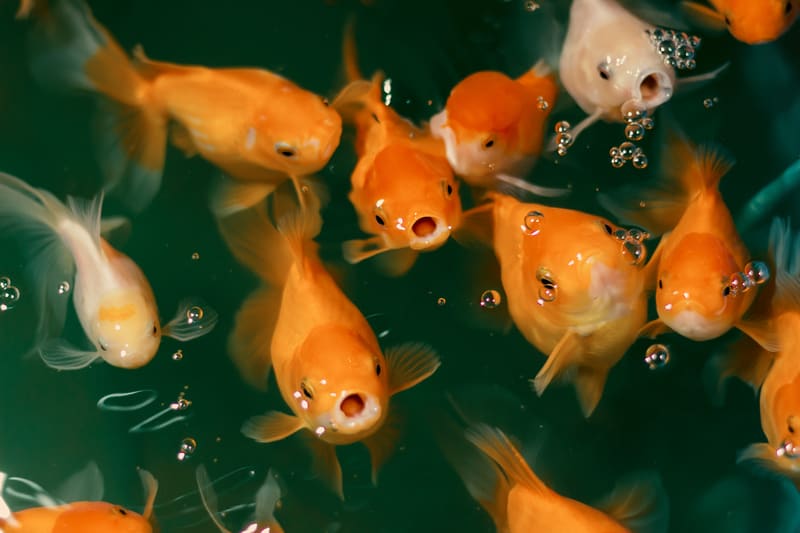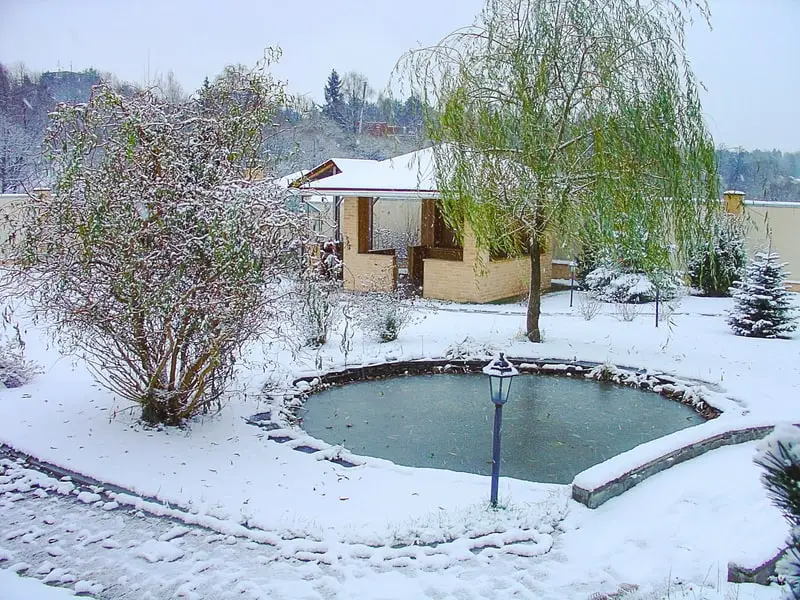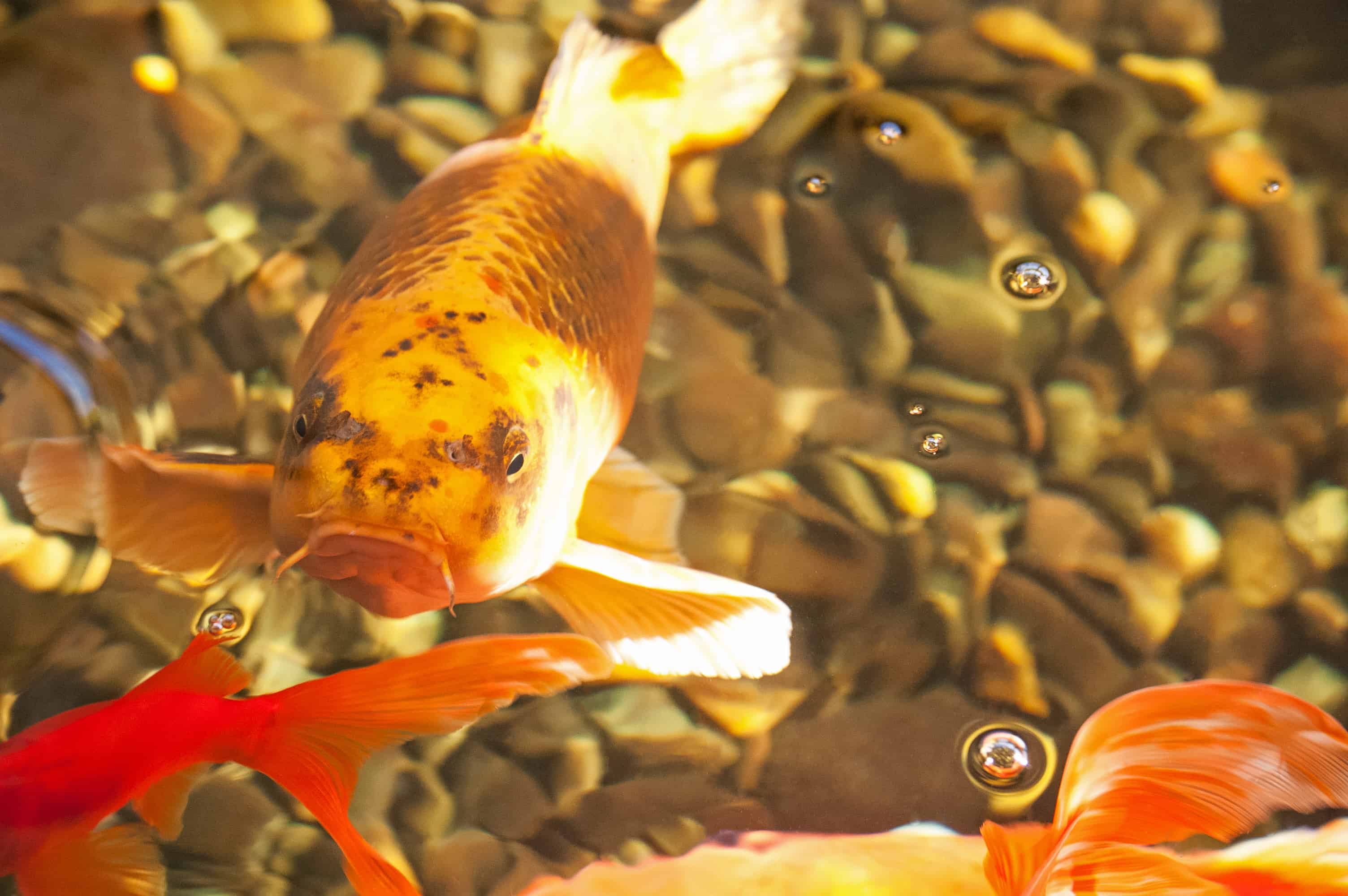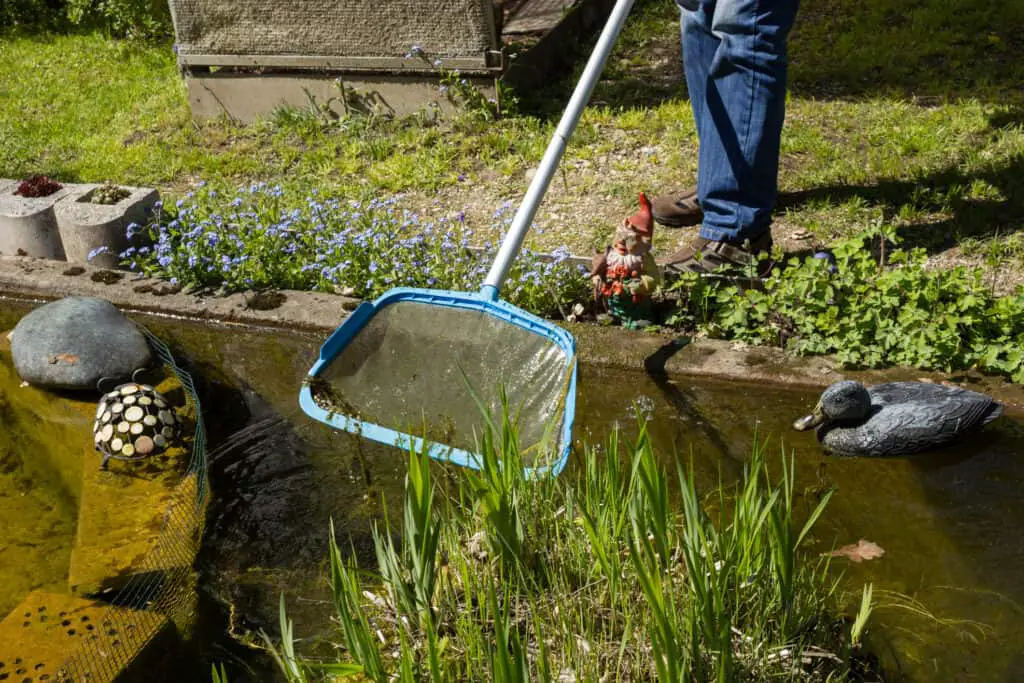Water Temperature to Start Feeding Koi

Koi fish are beautiful creatures covered in bright colors that make them eye-catching. These fish can be challenging to look after at times, but they bring joy to many people. The feeding schedule of Koi fish is one challenging aspect of keeping them at changes throughout the year. So, at what temperature do you stop feeding Koi fish?
The water temperature will determine Koi fishes' feeding schedule, as their digestive systems will begin to slow down as the temperature drops. When the water's temperature drops below 40°F, you should stop feeding your Koi fish as they will start to hibernate.
How should you gradually slow down the feeding of your Koi fish before you stop it completely for the winter? Can you feed your Koi fish through the winter if you want to? When should you start feeding your Koi fish again? Let's find out!
When To Stop Feeding Koi Fish
Koi fish are stunning, with is why they are so popular today. However, these fish require slightly more care than other fish that we are more accustomed to looking after, like goldfish, especially if they are kept outside Koi Pond.
This is because Koi fish are native to countries like Japan and thrive in their climates. So, if they are moved to a country with different environments, the Koi fish will have to adapt to these differences and require your help to thrive in their new environment.
You will need to take into account with your Koi fish that the weather will affect their feeding schedule and how much they need to be fed per feeding.
As the air temperature falls, the water temperature in your Koi Pond will drop too. This will happen if your Koi are kept indoors and outdoors, so you must monitor the water temperature in both scenarios.
You need to monitor the water's temperature as there is a direct relationship between your Koi fish's digestive system and the temperature of the water. With Koi fish, their digestive system will slow down as the water temperature drops.
So, what temperature would you need to stop feeding your Koi fish? Based on the water's temperature, let's go through the feeding schedule you should be following for your Koi fish.
Feeding Schedule For Koi Fish Based On Temperature
In the late spring through to late summer or early fall, your Koi Pond's water temperature should be about 86°F or above. During this time, you should be feeding your Koi fish twice a day, or even up to four times a day if you have young Koi fish.
When the temperature of the water in your Koi Pond is in the range of 68°F to 86°F, this is when your Koi fish will be the most active. When the water's temperature drops below 68°F, your Koi fish's digestive system will slow down.
When the water's temperature is in the range of 59°F to 68°F, you will need to cut down on the number of times you feed your Koi fish by half. So, if you have been feeding them twice a day, you will start feeding them only once a day.
As the water temperature drops even further and is between 50°F and 59°F, you will need to watch the portion sizes you are feeding your Koi. They will likely begin eating less in this temperature range, so you need to feed them less to avoid food affecting the water's quality.
During this time, you still feed your Koi fish in this temperature range at least once a day.
With a further drop in temperature to between 50°F and 41°F, you will need to lessen the number of times you feed your Koi fish two or three times a week.
Then as the water's temperature drops below 40°F, you need to stop feeding your Koi fish entirely, as your koi fish go into hibernation.
Why Do People Stop Feeding Koi In Winter?

With the growing number of people owning Koi fish growing, there are bound to be contradictory opinions based on the care required for these fish. Some people are aging against not feeding their fish through the winter.
While there are some times when this is acceptable, it's generally accepted and agreed on by Koi fish professionals that you should stop feeding your fish over winter when the temperatures are low.
The reason why most people stop feeding their Koi fish in the winter is due to the way the Koi fish's digestive system is linked to the temperature. As the temperature lowers, the Koi's digestive system will slow down.
When their digestive systems slow down and they enter their hibernation, they don't require the energy they get from the food you feed them as they are not active.
If you feed your Koi fish during this time, the food can cause various problems for your fish. If the Koi fish eats the food, it could cause a blockage in the fish's digestive system as it won't be digested fast enough. This blockage of undigested food can kill your Koi fish.
If your Koi fish don't eat the food, it can sink to the bottom of the water and begin to break up and dissolve in the water. This will affect the quality of the water, which can start to affect your Koi's health if you don't clean the water with a fine filter.
Can You Feed Your Koi Fish Over Winter?
So, there are some good reasons not to feed your Koi fish through the winter, but what are the scenarios mentioned above where you could still feed your Koi fish through the winter?
The two scenarios where you might be able to feed your Koi fish through winter are when you keep your Koi fish indoors and are in full control over the water temperature or if you live in climates that don't drop past 50°F in the winter.
If you keep your Koi fish indoors and control the temperature of the water your Koi fish are in, you can keep the temperature above 59°F or even in the optimal range of 68°F to 86°F; then, you can continue to feed your Koi fish as normal through the winter.
This is because your Koi fish will not go into their hibernation and will continue to be active, meaning they will need the energy from food. If you live in an environment that does not have cold winters, your Koi fish will not begin their hibernation as the water won't get cold enough.
In both of these situations, you can continue feeding your Koi fish as normal, but ensure you are giving them a healthy and balanced diet to keep them healthy.
Tips For Caring For Koi In Winter
If you want your Koi fish to be healthy and happy through the winter months, there are a few things you should do other than stop feeding them.
These few things will help prepare your Koi fish for the cold temperatures and hibernation. Let's go through these few tips to know your fish will be ready for winter.
Treat Your Koi For Infection Or Parasites In Early Winter

The first tip we will cover is something that many Koi owners forget to do or are unaware they should do before the temperature drops too low in winter. This is treating your Koi fish for any infections, parasites, or illnesses before the winter temperatures set in.
It would be best if you treated your Koi fish for these issues before the winter as the Koi fishes are most vulnerable to them when hibernating. As the Koi fish's digestive system slows down, their immune system lowers too.
Due to this, you should treat your Koi Pond for a wide range of parasites and any bacteria that could cause bacterial infections in your fish. You should also examine and observe each Koi fish for any signs that indicate an illness that needs treatment.
You need to do these about two months before you expect the temperature to drop below 50°F to ensure your Koi fish are protected through the winter. You can contact your local aquarium store with Koi fish experts to find out the best way to treat your Koi Pond.
Use A Floating De-Icer And Air Stones In Koi Ponds
In the winter, you will need to keep your Koi Pond clean and still have access to your Koi fish if you need to treat your fish for any possible illnesses or infections. This can be difficult if the pond is covered in a thick layer of ice.
This ice can also cause problems as some toxic gases can also begin to build up in the water as they cannot be released into the air. This is due to some of the organic matter in the pond, such as some plant life, beginning to decompose in the pond.
This decomposition will produce some toxic gases trapped in the pond if a thick layer of ice is on the surface. This gas can begin to affect the health of the fish living in the water under the ice.
So, if you know your Koi Pond is prone to icing over in the winter as the temperatures drop low enough, you need to keep a section of the pond free of ice to avoid a gas build-up in your pond. You can easily keep an area ice-free by buying a de-icer for your pond.
This is a device that has a built-in thermostat and heating element and will float around your pond. The heating element will turn on when the built-in thermostat detects that the water temperature is lower than 40°F, the heating element will turn on. This will help prevent a section of your pond from icing over.
You can also use some air stones in conjunction with a de-icer to help reduce the toxic gas in the water. We need to note here that if ice develops on the surface of your pond, you should never try to break it by force. If you do this, the sound waves created could travel through the water and harm your Koi fish.
Clean Your Koi Pond Or Tank Before Winter

Give your Koi Pond a thorough clean before the winter hits, as this will help keep your Koi fish healthy and happy throughout the cold winter season. It would be best if you did this big pond clean in the autumn before the water temperature drops to below 40°F.
In this big clean, you need to get rid of all the waste and leaves in and around your Koi Pond. This will help decrease the toxic gases that can develop under the ice in winter as there is less plant life in the water to decompose.
It would be best if you also did a big water change during this clean to ensure the water is clean and fresh for your Koi fish to live in through winter.
When Should I Start Feeding My Koi Fish Again After Winter?

So, now that you know what temperature you need to stop feeding your Koi fish at and how to help your Koi fish stay healthy through the cold winter months, you might be wondering when you should begin feeding your Koi fish again after winter.
In the early spring, when the temperatures start to warm up, you will notice your Koi fishes' activity increase, and they will start looking for food. However, you should still measure the water's temperature and see if it's above 50°F.
It would be best to begin feeding your Koi fish when the temperature is 50°F as their digestive systems would start to speed up again at this temperature. You should also start your Koi fish with some wheat germ first, as this food is easy to digest and will get the fish fully functional again.
Conclusion
Koi fish don't need to eat through the winter months as their digestive systems slow down in the cold temperatures. You can start slowing down with their feedings when the temperature begins to drop below 59°F, and then you can start feeding them again in the spring when the temperature reaches 50°F. Good luck with your Koi fish!
References
https://www.pondexperts.ca/pond-advice-tips/feeding-koi-at-different-temperatures/#:~:text=At%20around%2064%C2%B0F,you%20should%20stop%20feeding%20altogether.
https://alabamaaquarium.com/when-and-why-to-stop-feeding-your-koi-fish-in-winter/
https://www.allpondsolutions.co.uk/fishkeeping-advice/your-go-to-winter-koi-pond-guide.html
https://pondinformer.com/feeding-koi-carp-in-winter/
https://aquanooga.com/tips-for-winter-care-of-koi-goldfish/
https://fishkeepingforever.com/when-should-you-stop-feeding-pond-fish/
gillispieprign1979.blogspot.com
Source: https://pondheaven.com/at-what-temperature-do-i-stop-feeding-my-koi-fish/
0 Response to "Water Temperature to Start Feeding Koi"
Enregistrer un commentaire